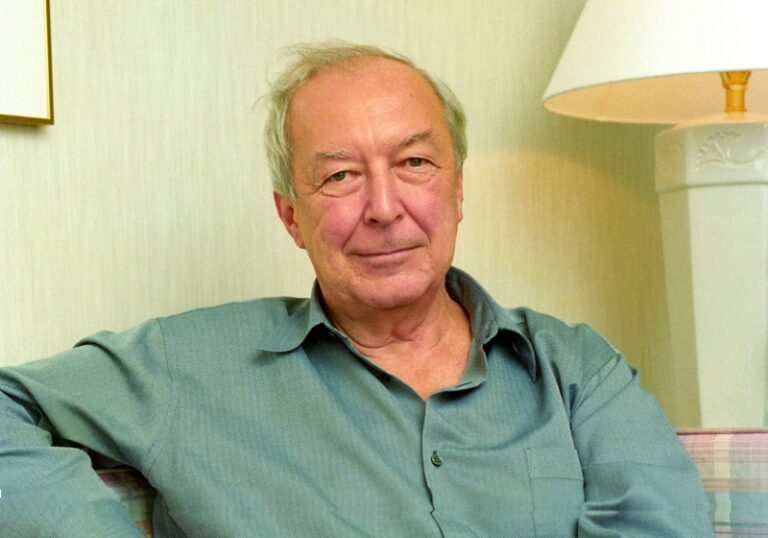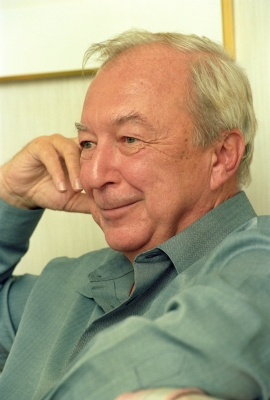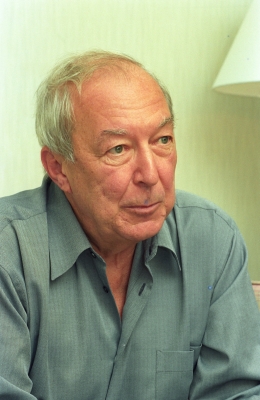The 5th
LaureatePainting
Jasper Johns

Jasper Johns came to prominence in the late 1950s as one of the leaders of the American pop art scene. Where the fashionable abstract expressionists expressed themselves on a heroic scale,Johns’ paintings of banal subjects such as the American flag or targets were the opposite - ironic and detached. His bronze casts of beer cans and paintbrushes echoed Marcel Duchamp’s idea of the readymade work of art,signalling the enormous influence Duchamp was to have on postwar art. Later Johns combined casts of parts of his body with passages of self-consciously painterly painting,and brilliantly executed illusionism,established himself as a forerunner of postmodernism. His reputation as one of the founding figures of New York’s domination of the artworld was consolidated through the 1960s,70s and 80s. Today he is among the most lucid and subtly revealing painters working anywhere.
Biography
During the 1950s,when abstract expressionism was achieving recognition in the United States as proof of America’s artistic maturity,Jasper Johns,like Robert Rauschenberg,challenged its criteria. In doing so they initiated developments that came to fruition in the sixties and seventies and their apparently nihilistic approach turned out to be the opening moves in two deeply reflective and essentially constructive careers. They brought postmodernist thinking into art before the term was coined. Johns’ challenge became public with his first exhibition in 1958. His choice of banal motifs such as the American flag,targets or numbers,represented impersonally; his apparent lack of interest in the self-exploring,self-exposing aims of artists like Rothko and Pollock and others,were both shocking and philosophically thrilling. Yet there was also the controlled beauty of his carefully worked encaustic paintings,as against the spontaneous and chance-driven idioms of abstract expressionism. While attacking the theory and methods of his predecessors,at the level of picture-making he was upstaging them by presenting himself as a young Old Master. At the time he was 28 years old. He had studied briefly at the University of Southern Carolina before having six months of commercial art training in New York. There followed temporary jobs and military service. In 1954 he met Rauschenberg. They collaborated in designing window displays for stores as a way to finance their art.
One night in 1955,in response to a dream,Johns painted Flag,the first of a series. This attracted the greatest controversy in 1958,being seen as both mocking and subversive. Yet the refinement of his work and what it said of his thinking indicated an artist as subtle as he was challenging. Johns’ purpose was to provoke thought in the existing art context whilst,as he put it,suggesting the world rather than his personality. Hence his choice of other ‘ordinary things’ and soon also paintings with three-dimensional elements and then sculptures of flashlights,ale cans,paint brushes crammed into a can,mostly cast in bronze and sometimes painted naturalistically. These brought him close to Marcel Duchamp’s designation of existing objects as works of art. What is a carefully painted flag: a flag,or a representation of a flag? It is a kind of pun,illuminating ways of thinking whilst also enlarging art,particularly the area where abstract art meets figurative art. Is a painting of numbers or of a map figurative or abstract?
The sixties found Jasper Johns combining three-dimensional fragments with flat painting (he had essayed this earlier) and exploring his own anatomy in drawings and prints. Untitled,1972,is a large painting on four panels,one showing cross hatching,two showing a large-scale pattern resembling flagstones irregularly set in concrete and one bearing wooded bars and anatomical casts. We are left to speculate on ways of painting and about art’s distance,large or small,from life. There followed a series of paintings in which the crosshatch motif alone is used. Scent,1973–74,shares its title with a painting by Pollock and echoes his allover rhythm; it also recalls paintings Léger did around 1914. Soon Johns was painting polyptychs that invite a figurative reading: Weeping Woman,1975,recalls Picasso’s series of 1937 and the trio of women in Picasso’s The Dance,1925. Johns’ series found its climax in Usuyuki,1977–78,a luminous triptych which is also one of his most tightly planned works. Symbolic images and references added to paintings of this sort suggested grave meanings. These became more explicit in paintings titled,after one of Edvard Munch’s,Between the Clock and the Bed,1981–83. Was Johns truly indifferent to content?
The personal element has become more prominent since then. In In the Studio,1982,a cast of his lower left arm hangs from a hook,its line continued in a wood lath going down to the bottom. The rest echoes the tradition of trompe l’œil: what look like three works on paper are tacked to the studio wall by nails that cast shadows,a motif Braque introduced into cubism to contrast realism with semi-abstraction. In other paintings of the eighties Johns planted references to the apocalyptic art of Grünewald and Hieronymous Bosch. This appropriating of artworld images has continued,as in Racing Thoughts,1984,with its photo of Johns’ dealer Leo Castelli,a ‘Mona Lisa’ (signalling both Leonardo and Duchamp),a reversed Barnett Newman print and a vase form made of two profiles,accompanied by more domestic references,all done in paint. The same and similar motifs recur in his 1986 paintings of the Four Seasons together with the shadow of the artist. Art and living experience are here represented in a context of time passing.
In this way the human condition has become the theme of an artist once regarded an iconoclast. Johns still works out of deep consideration of art’s traditions,but his focus on issues of life and death has muted his irony and enriched his armoury of symbols. His recent work refreshes the classical tradition of history and allegorical painting through quintessentially modern methods. The perplexing young Old Master has become a wise old master,outstandingly gifted in intelligence and deftness.
Norbert Lynton
Chronology
-

©The Sankei Shimbun
-

©The Sankei Shimbun

